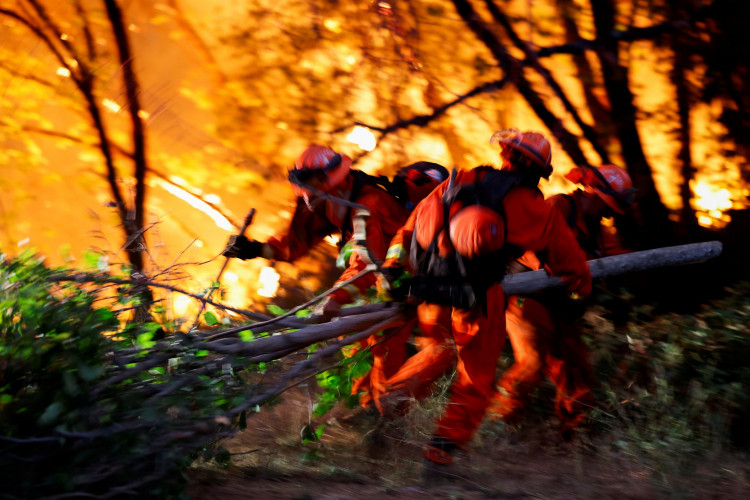California's Park Fire and Oregon's Durkee Fire have unleashed a wave of devastation, prompting urgent evacuations and straining firefighting resources across the western United States. These wildfires, exacerbated by extreme weather conditions, have scorched vast areas, leaving communities in turmoil and officials scrambling to contain the damage.
In California, the Park Fire erupted in Butte County, near the town of Chico, rapidly expanding from a small blaze to a monstrous inferno. Starting in Bidwell Park, the fire grew from 6,500 acres on Wednesday night to over 45,550 acres by Thursday morning. The rapid expansion, fueled by triple-digit temperatures and gusty winds, forced the evacuation of more than 1,500 structures in Butte and neighboring Tehama counties.
CAL Fire officials reported only 3% containment as over 200 firefighters battled the flames under grueling conditions. An evacuation center was established at a church in Chico, providing temporary refuge for displaced residents.
Time-lapse from 7/24 showing the rapid growth of the #ParkFire in Butte County. The Richardson Springs camera is now offline and we do not know its status. Watch on YT: https://t.co/NPvEuqtj9U More ALERTCalifornia cams: https://t.co/9JBuX4YdR9 Follow @CALFIRE_ButteCo for updates. pic.twitter.com/bF5Pa2L7Ma — ALERTCalifornia (@ALERTCalifornia) July 25, 2024
Meanwhile, in Oregon, the Durkee Fire has become the largest active wildfire in the United States, ravaging nearly 270,000 acres near the Oregon-Idaho state line. The blaze, which started on July 17, remains 0% contained. The fire has injured three people, destroyed multiple structures, and forced evacuations in Malheur and Baker counties. Dense smoke from the flames has also disrupted traffic on Interstate 84, causing periodic closures. Governor Tina Kotek has deployed National Guard resources to assist in the firefighting efforts.
The Durkee Fire's extreme behavior, including the formation of pyrocumulus clouds-massive clouds created by intense heat-has posed additional challenges. These clouds can generate their own weather systems, including thunderstorms and lightning, which further complicate firefighting efforts. The fire's rapid spread and the creation of its own weather highlight the severe conditions faced by firefighters on the ground.
The wildfires in California and Oregon are part of a broader crisis affecting the western United States, where nearly 80 large active wildfires are currently burning. The fires have been fueled by a combination of high temperatures, dry vegetation, and strong winds. In Northern California, temperatures have soared above 100 degrees, creating ideal conditions for the fires to spread. Despite the challenging conditions, cooler weather is expected by the weekend, which may provide some relief to firefighters.
Federal and state agencies are working tirelessly to combat the fires. In response to the Park Fire, the Federal Emergency Management Agency (FEMA) has authorized federal funding to assist with firefighting efforts. In Oregon, over 500 firefighters and resources from 22 states have been deployed to fight the Durkee Fire. The National Guard and local emergency management agencies are coordinating efforts to protect communities and infrastructure.
The impact of these wildfires extends beyond the immediate destruction. In the Philippines, Typhoon Gaemi, also known as Typhoon Carina, has compounded the devastation, causing landslides and flooding. The storm, which did not make landfall in the Philippines but intensified monsoon rains, has resulted in 22 deaths. The Philippine coast guard reported the sinking of an oil tanker, MT Terra Nova, in rough seas, adding to the crisis.
As the fires continue to burn, officials are urging residents to heed evacuation orders and stay informed about the latest developments. The scale and intensity of these wildfires serve as a stark reminder of the growing challenges posed by climate change and the need for robust disaster preparedness and response strategies.
The coming days will be critical as firefighters work to contain the flames and protect communities. The resilience and dedication of the firefighting teams, along with the support from federal and state agencies, will be crucial in mitigating the impact of these devastating wildfires.






